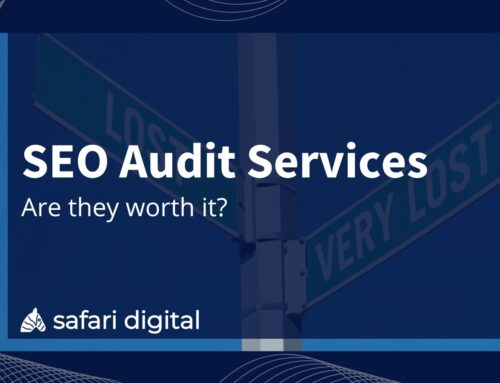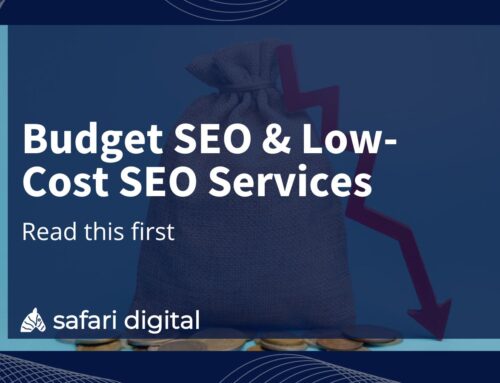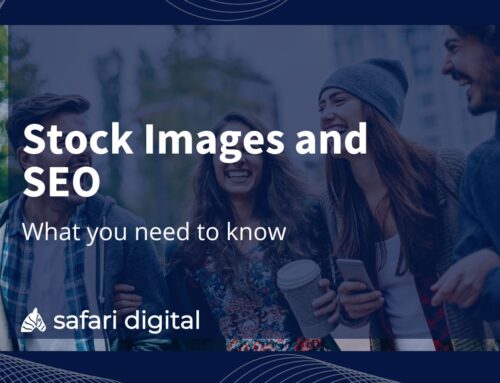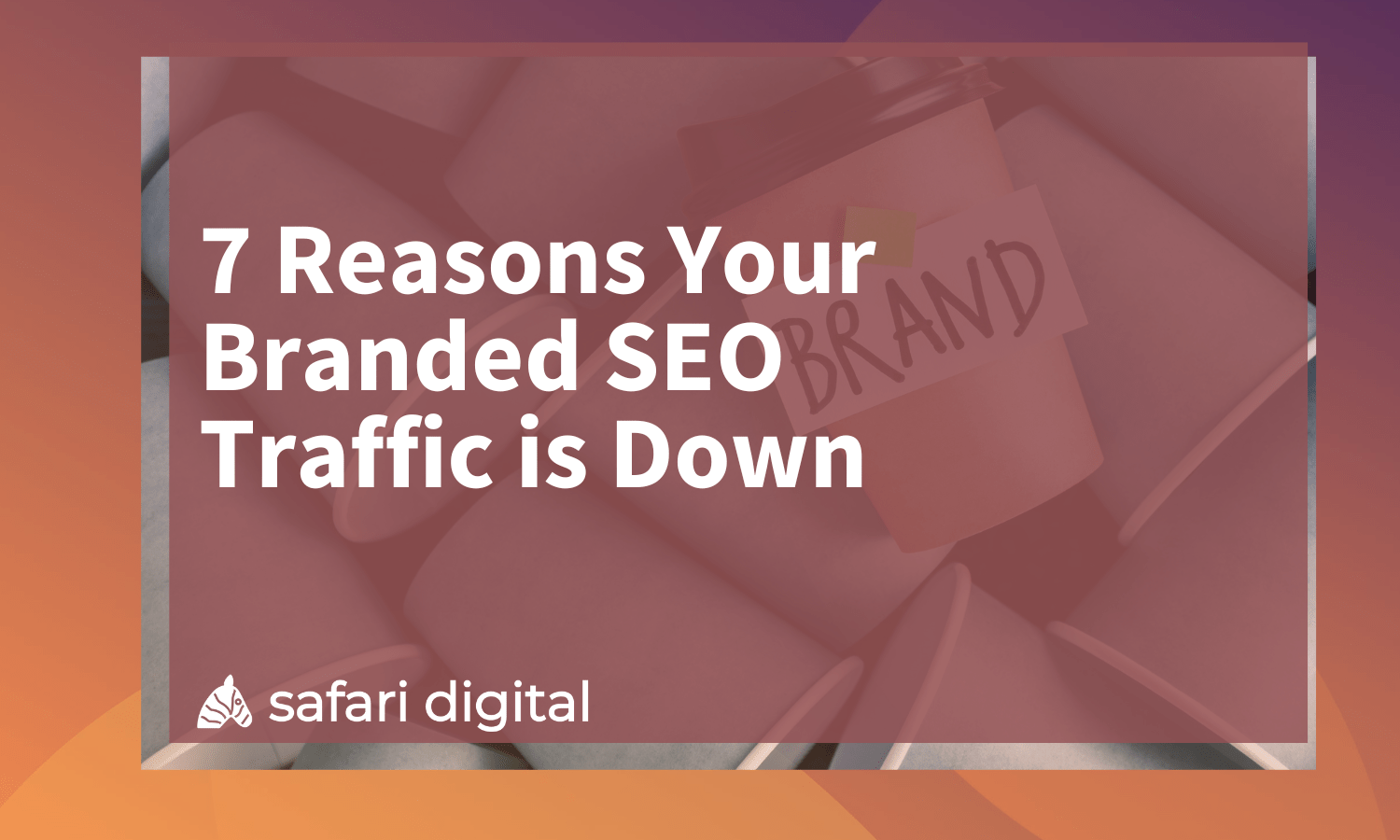
In 2023, Google’s organic search results are more competitive than ever before.
So, for a business with an established, recognisable name, branded organic traffic is a crucial component in driving qualified, lucrative website traffic.
But what happens when your branded traffic starts to go south, how can you identify the cause and overcome the slump?
If you’ve seen a change to your branded organic traffic, don’t fret – there could be some simple explanations and remedies for changes to your branded traffic. In this guide to branded traffic, we’ll explore the most common reasons your branded traffic is down and provide expert tips to help you overcome these challenges and get your branded search traffic back in the green.
What is branded traffic?
As the name might suggest, branded traffic refers to users that visit your website off-the-back of a brand name search. This may be a direct brand name search, or it may include different variations of a brand name search with various parameters that users may use to navigate to a specific web page. For instance, that might look like:
• Safari Digital
• Contact Safari Digital
• Safari SEO services
• Safari Digital Pricing
Users are essentially using Google as a navigational tool to reach your website in lieu of typing in your URL or navigating to their desired web page. This can include searches that pair your brand name with specific products, services, and other relevant terms. As brands build recognition, gain repeat clientele, and engage in awareness marketing campaigns, branded traffic will naturally increase.
Why is branded traffic important?
Imagine users that are so engaged with your brand that they aren’t interested in looking at other options – that’s the value of branded search traffic.
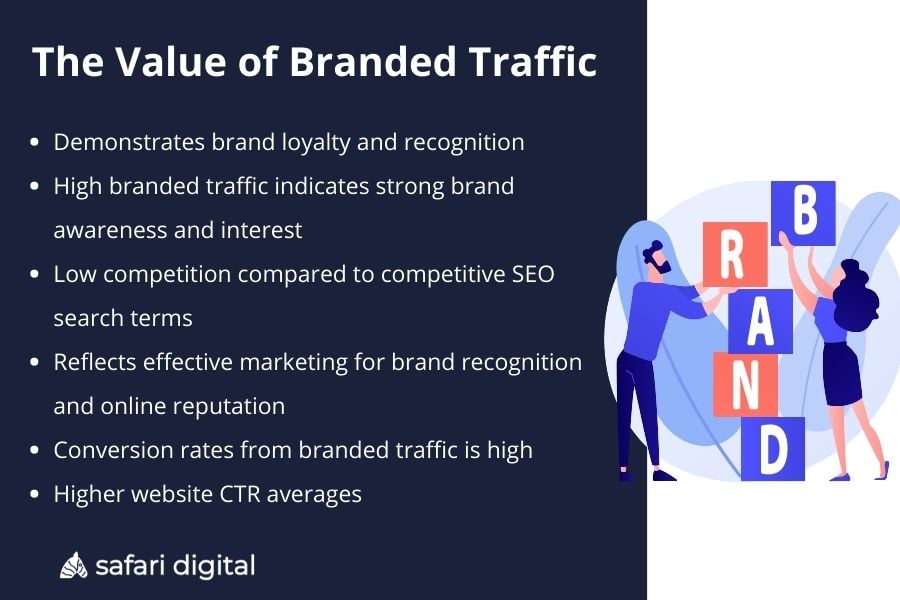
Branded traffic comes with time and awareness. When it comes to organic website traffic, branded traffic is highly lucrative and forms an integral part of a successful SEO campaign for a number of reasons.
High relevancy, high conversion: Users searching for your brand name already know your story. They know who you are, how you can help to solve their problem, and are typically in the final stages of the sales or conversion funnel. Branded traffic means that users are seeking out your website and (in many cases) are ready to complete a purchase or interact with your brand.
Authority and trust: Users visiting a website through a branded search term arrive with a higher level of trust than users visiting your website through competitive, brand-agnostic search terms.
Customer retention: Brand traffic isn’t just a sign that users are ready to make a purchase, it’s also a strong signal that your customer retention and loyalty is on the rise. Users coming to your website through branded search terms are often repeat customers or existing clients.
Lower bounce rates: Alright, so bounce rates aren’t a direct ranking factor, however, lower bounce rates from branded search sure do make for a nice-looking marketing report. Branded search effectively lowers bounce rates, increases time on site, and contributes to a whole host of other metrics.
How to measure branded traffic
If you don’t measure and monitor your banded traffic, you won’t know if it’s down. So, here are a few reliable ways to measure your branded traffic, check how it’s performing, and identify what needs to be improved:
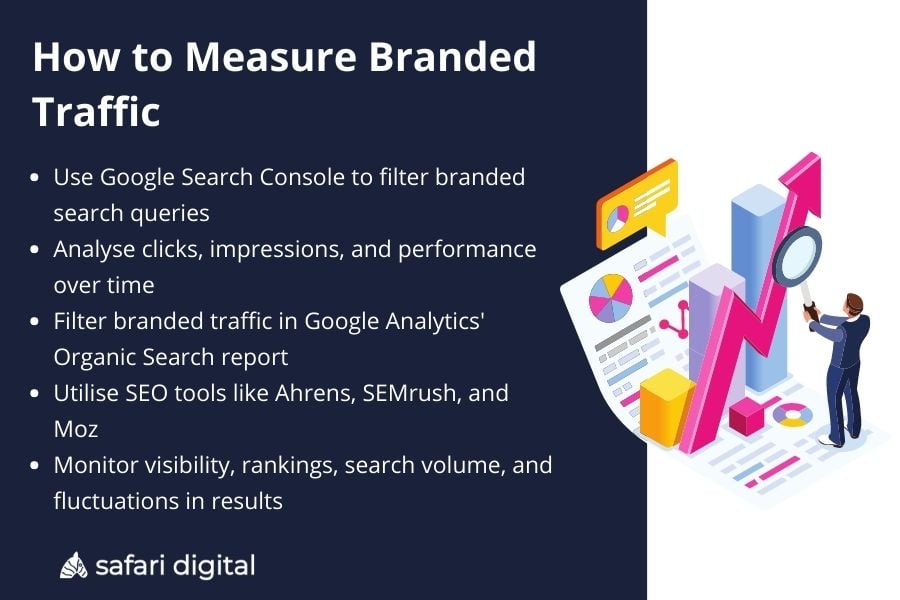
• Use Google Search Console to filter search queries with your brand name and variations. You’ll be able to see how many clicks and impressions you get from each brand related search query and compare your performance over multiple periods of time.
• Use the ‘Organic Search’ report in Google Analytics to filter all traffic from brand name searches. You can analyse your branded traffic’s behaviour, performance, and conversion and compare it against other traffic sources.
• Use SEO tools like Ahrefs, Semrush, and Moz to monitor and track your branded keywords. You’ll be able to see your branded keywords’ visibility, rankings, search volume, and fluctuations in search results.
Reasons your branded traffic may be down
So, you’ve found out that your brand traffic is down. It’s a tough pill to swallow, considering you might not even know why or what you’ve done wrong. But it’s vital to pinpoint the issue so you can implement the right strategy to recover and grow your brand’s online presence. That’s where we come in — here are the top 7 reasons why your branded traffic is declining and what you can do to fix it.
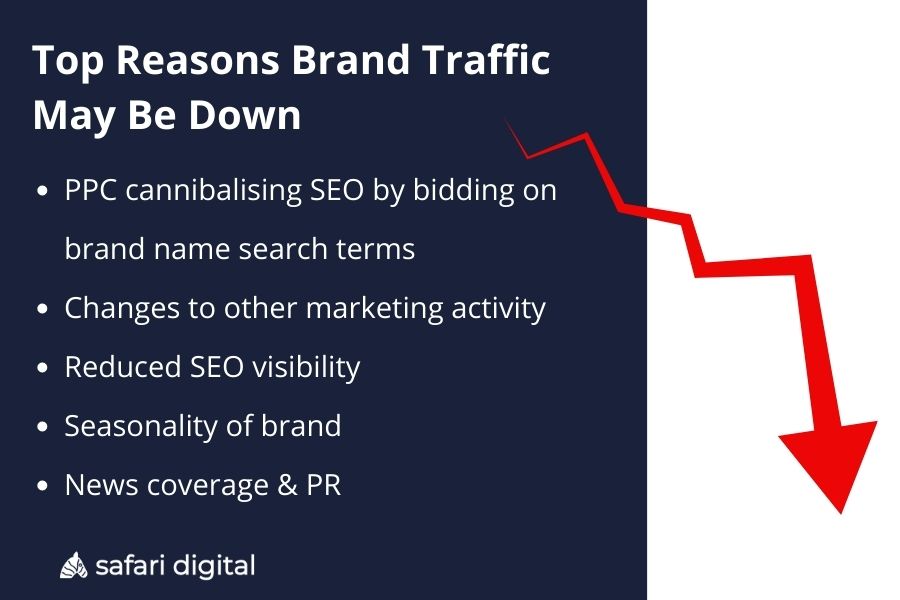
1. Bidding on brand keywords in Google Ads
There are no two ways about it, Bidding on brand keywords in Google Ads is the number 1 reason that branded traffic is down. Bidding on your brand name can result in a decrease in organic branded traffic — users will click on the ads instead of organic search results, making your efforts counterproductive. Consider reducing your ad spend on branded keywords to regain more organic traffic. Alternatively, optimise your ad copy so that it targets different user intents.
2. Changes to social media marketing
Social media marketing helps to build brand name awareness — pulling back on social media activity means fewer people will search for your brand. If you’ve been using social media in your marketing strategy, analyse your brand’s performance to determine if the decline is linked to your social media presence. Identify gaps in your strategy and plan a new campaign to boost your brand’s awareness. Posting more frequently and regularly can help, as well as creating quality content. Know your audience and adjust accordingly.
3. Changes to other marketing activity
Changes to other marketing activity may positively (more coverage) or negatively (less coverage) affect brand name searches. Whether you’ve recently discontinued a content marketing campaign, decreased the frequency of your email marketing and newsletters, or redesigned your website, evaluate the potential impact of each change in marketing activity and identify what may have caused the decline in branded traffic. Depending on the issue, you may want to revisit successful campaigns or create new marketing channels.
4. Keyword cannibalisation
Keyword cannibalisation occurs when multiple website pages compete for the same keyword. If you’re trying to rank for the same keyword on multiple pages, you’re shooting yourself in the foot. For example, the content on your home page and about page may be cannibalising your brand name, making it harder for search engines to rank the right page.
Given that your home page is the most important page on your website, you don’t want the about page to rank above it for your brand name. Sometimes, your social profiles (Facebook, LinkedIn, etc.) may even outrank your website for branded searches. To avoid keyword cannibalisation of your brand name and associated brand keywords that pull in valuable traffic, ensure that each page on your website targets a unique set of keywords and avoid excessive internal linking between competing pages.
5. Reduced SEO visibility
If your rankings have dropped across your website, it means your SEO visibility is down. While this doesn’t directly impact your branded traffic, it can mean that you are showing up for fewer search terms which can (in turn) mean that fewer users are searching directly for your website after seeing it appear in an article, service, product, or elsewhere. If your SEO visibility is down, investigate all potential causes, such as:
• Technical SEO issues
• Poor quality of content
• Lost backlinks
• Poor internal link strategy
Address these issues and improve your overall SEO strategy to improve your rankings and increase your potential for branded traffic.
6. Seasonality of brand
Some brands may be seasonal and receive more traffic at certain times of the year. For example, the London Marathon website may receive more brand traffic in the lead-up to the race. A holiday-themed e-commerce store may experience high branded traffic in the festive season but low rankings in the off-season. Seasonal brands should plan their marketing strategy accordingly to capitalise on peak periods and maintain visibility in quieter periods. If you’re not sure if your brand is affected by seasonal trends, analyse your historical data and compare your performance between periods using Google Search Console to see what time of each year your traffic was up or down.
7. News coverage & PR
Your branded traffic may experience a spike if your brand has recently been in the news or if you have participated in a significant PR event. However, it will inevitably drop back down after a period of high traffic once the news coverage is no longer relevant. While it can be exciting to see your traffic spike, consider any significant fluctuations to avoid drawing inaccurate conclusions. When you analyse branded traffic, whether through Google Search Console or Semrush, consider the time frame and context of the traffic: are you comparing your traffic from an average period against a period where your brand was trending in the news?
Final thoughts and tips
Finding the cause of the decline of your branded traffic can sometimes feel like searching for a needle in a digital haystack. Remember to continually monitor your branded traffic and compare your website performance to stay informed of significant changes and trends. Be sure to consider every possible factor for declining branded traffic to pinpoint which is responsible for decreasing your brand-specific search visits. But discovering the problem is just the first step — and fixing it requires hard work and patience.
If you’re struggling to solve your branded traffic issues, consult a professional SEO agency to analyse and improve your website performance. Whether it’s changes in marketing strategies, keyword cannibalisation, or brand name bidding, problems affecting your branded traffic negatively are best dealt with immediately and effectively by expert SEO specialists who can help your brand remain relevant and competitive in the ever-growing digital landscape.



